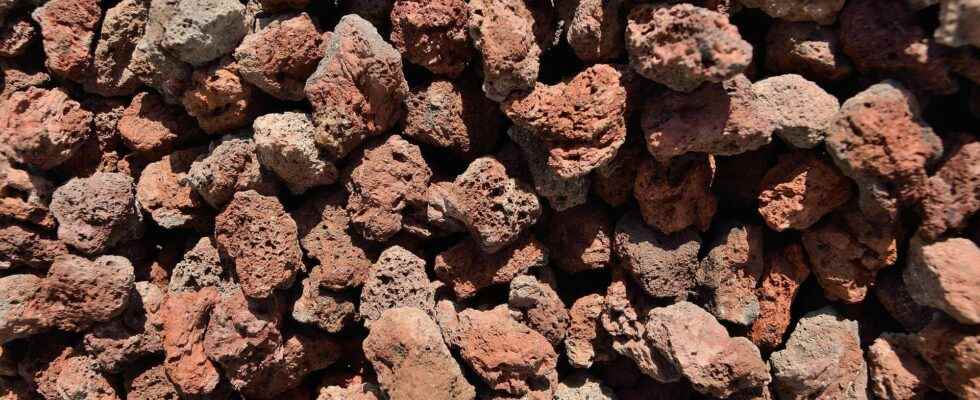Pozzolan is a rock of volcanic origin, friable and not very dense, of composition essentially basalt. The term comes from Pozzuoli, an Italian city in the region of Naples where this material has been used a lot as cement natural in antiquity. It is she who notably made the reputation of the famous “Roman concrete”.
Pozzolan formation
Pozzolan is made up of fragments of magma (ashes, lapillibombs…) thrown into theatmosphere during’volcanic eruptions and cooled during their aerial journey. This cooling being relatively rapid, the volcanic glass amorphous and uncrystallized is one of the major components of pozzolan. The other constituents are minerals magmatic (feldspar, pyroxene, olivineamphibole, oxide of iron…) and xenoliths, rocks foreign to the environment torn from geological formations prior to the volcanism. Pozzolan is usually color black or red depending on the degree ofoxidation iron.
Pozzolan deposits
In France, the deposits are located in the volcanic massifs of the Chaîne des Puys, Mont-Dore-Sancy, the Cézallier massif, Devès, Puy-en-Velay, but also in Ardèche and Bas-Languedoc. Pozzolan is also mined in Guadeloupe and Réunion.
Industrial applications of pozzolan
- Construction: manufacture of lightweight concrete for concrete blocks, bushels of chimney, terracesembankments, conduits, constitution of layers under slab and under tiling…
- Sports floors (football pitch, tennis court and athletics tracks) as a drainage layer;
- Agriculture : mulching and soil drainage;
- Sanitation: filtration drinking water, absorbent tray of purification stations, filter of septic tanks;
- Desalination of roads (especially in the mountains to limit salt);
- It is sometimes found in barbecue materials, litters for cat or aquarium stones.
Using pozzolan in the garden
Thanks to its great capacity forabsorptionpozzolan is used as a mulch mineral in beds: it retains water and supplies the plants according to their needs. It also promotes aeration by storing the heat of sun during the day and restoring it during the night. Pozzolan should be spread at the rate of 75 kg per square meter, in a layer of 3 to 4 cm.
You will also be interested
Interested in what you just read?
